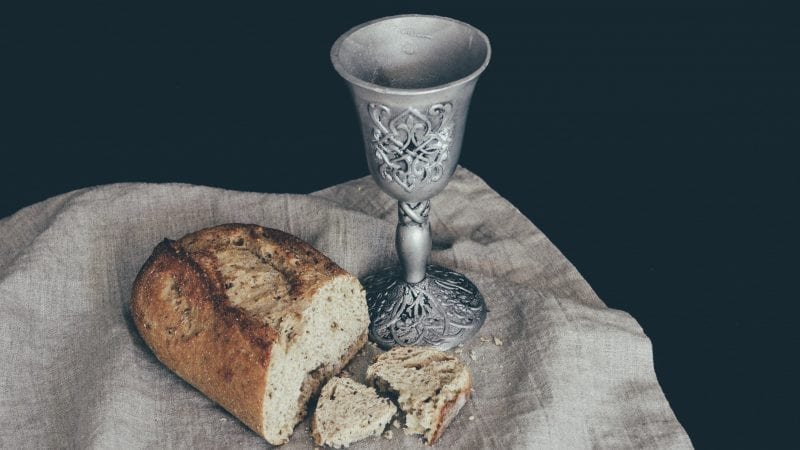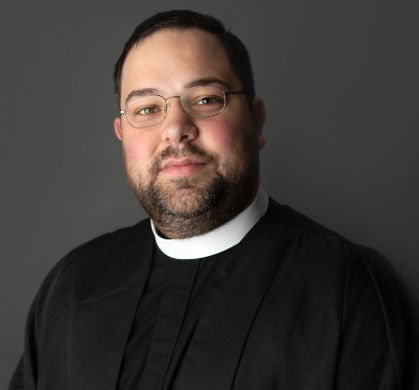Editor’s note: Click here to see the author’s first essay on this topic.
Some of my critics suggest that my reverence for the practice of celebrating Holy Communion while standing at the north side (or north end) of the Lord’s Table derives from some vain fancy of anachronistic romanticism for a bygone era. I have been provoked to defend my position and explain plainly why it is my belief that this posture is proper for expressing the doctrine and theology of the Anglican faith as it has been established and set forth in the Holy Scriptures, the Book of Common Prayer, and the Thirty-nine Articles of Religion. It is important to state that our Anglican religion is fiercely catholic (but certainly not Roman), fiercely orthodox (but certainly not Byzantine), and fiercely biblical: designed to be free of medieval corruption, theological innovation, and superstition.
Superstitions such as transubstantiation and the idea of a mediatorial priesthood have no warrant or basis in scripture. They have been perpetuated through the centuries, due in part to the practice of elevating the holy table, calling it an Altar (as if it were used for sacrifice), and concealing the manual acts of the priest from view of the faithful. I will certainly not deny the historicity of the eastward facing posture, used in many churches to this day, including my own. It is no doubt an ancient and orthodox practice, and I myself celebrate Holy Communion facing the East when necessity dictates. However, the practice has encouraged superstitions—such as those I note above—and many other erroneous practices and doctrines with no warrant or proof in the scriptures. Because some have spoken in opposition or inferred malice in my last essay, I am further outlining the reasons for my support of southward facing posture at Holy Communion.
The second Article of Religion confesses that the sacrifice of Christ has been made at Calvary, once and for all time. This was, as the prayer book says, “a full, perfect, and sufficient sacrifice, oblation and satisfaction for the sins of the whole world”, which need not be performed again by any mortal priest. The southward facing posture places the priest out of focus so that the faithful may plainly see the sacrament which they are about to receive. The focus is on the sacrament and their worship is directed to God.
The twenty-fifth Article of Religion confesses that the sacrament of the Lord’s Supper was ordained by Christ as an effectual sign (and seal) of grace to strengthen and confirm our faith in him. The sacrament was not instituted to be carried about or made a spectacle. The southward facing posture makes the rite plain and simple without show, or spectacle, to avoid superstition or vanity.
The twenty-sixth Article of Religion confesses that it is by the commission and authority of Christ and his Name, and not that of the mortal minister, we receive his grace. The southward facing posture makes central and visible the elements which are for us the body and blood of Christ—as it is Christ, and not any minister, by whom the sacrament is effected. It is right and laudable that the minister should be overshadowed by the sacrament and the attention of the faithful be upon Christ, without regard to the character of the minister. The Book of Common Prayer directs that the minister, “in Christ’s behalf”, bid the faithful to come to Holy Communion. The southward facing posture obscures any superstition that the minister stands in the place of Christ, rather that he calls the people, as a steward, to the Lord’s Table in his behalf.
The twenty-eighth Article of Religion, the Lord’s Supper “is a sacrament of our redemption by Christ’s death” in which we partake in Christ’s body and blood. It is not to be believed that, by some magical conjuring, a substantial change occurs in the elements of bread and wine. The southward facing posture makes plainly visible the manual acts of the priest so that no superstition can be supposed or implied. The Book of Common Prayer directs that the minister at Holy Communion should, with “readiness and decency break the bread before the people”. The southward facing posture allows the minister to break the bread in the sight of the people without turning about or clumsily holding it aloft.
The thirtieth Article of Religion confesses that no element of the Lord’s Supper should be withheld from the faithful. The southward facing posture makes plainly visible to the people the elements, that no part of them should be withheld from them, nor reserved for superstitious use or display.
The thirty-first Article of Religion confesses that the oblation of Christ was made sufficient upon the cross. To say that any minister or priest should offer Christ for the quick and the dead for the remission of pain or guilt is blasphemous and dangerous. The southward facing posture makes Christ and his work of grace central to the act of Christian worship, avoiding any superstitious belief that the priest is making any offering for the satisfaction of sin. In the words of the Book of Common Prayer, Jesus Christ is “our only mediator and advocate”. The southward facing posture avoids the false perception of mediation by a mortal minister by removing the minister from between the faithful and the Lord.
According to the Book of Common Prayer, every minister must understand that “there be no place … for error in religion, or for viciousness of life” in Christ’s Church. Every minister should be prepared and willing to “drive away from the church all erroneous and strange doctrines contrary to God’s Word” including any and all superstitions and perceptions which are not in accord with God’s Holy Word. Each priest is admonished to be a “faithful Dispenser of the Word of God” to the edification of the Church. He is to be faithful to the doctrine of the Church, conforming his life and ministry thereto. The southward facing posture avoids the risk of superstition or error at the Lord’s Table.
Thus, it is my conclusion and conviction that the practice of the minister standing at the north side of the holy table is useful to the maintenance of right and wholesome doctrine, a detriment to superstition and error, and a token of historic Anglican faith and practice. The use of this posture should be advocated as appropriate and favorable for the minister celebrating Holy Communion.
I should make it perfectly clear that I do not advocate or desire that the eastward facing position should be abandoned, if it is the current custom of one church or another. Instead, it is my desire to defend the practice of standing at the north side of the Lord’s Table against the attacks of my critics. The use of either posture, if done with just intention, is venerable. As with so many things, it is important to understand why we do things in certain manners and to appreciate the implications they have theologically or otherwise.



Never did I believe, all these years later, that I would read such a well thought out, and reasoned explanation for celebrating Communion from the north end.
May this post be the beginning of the recovery of a needed practice, and yes….tradition.